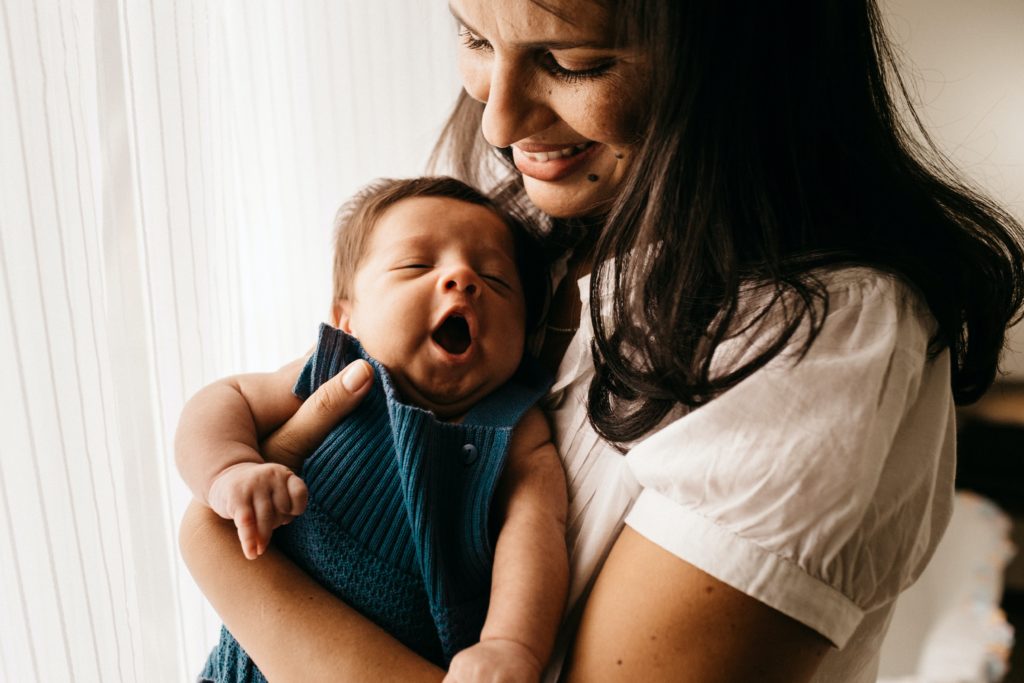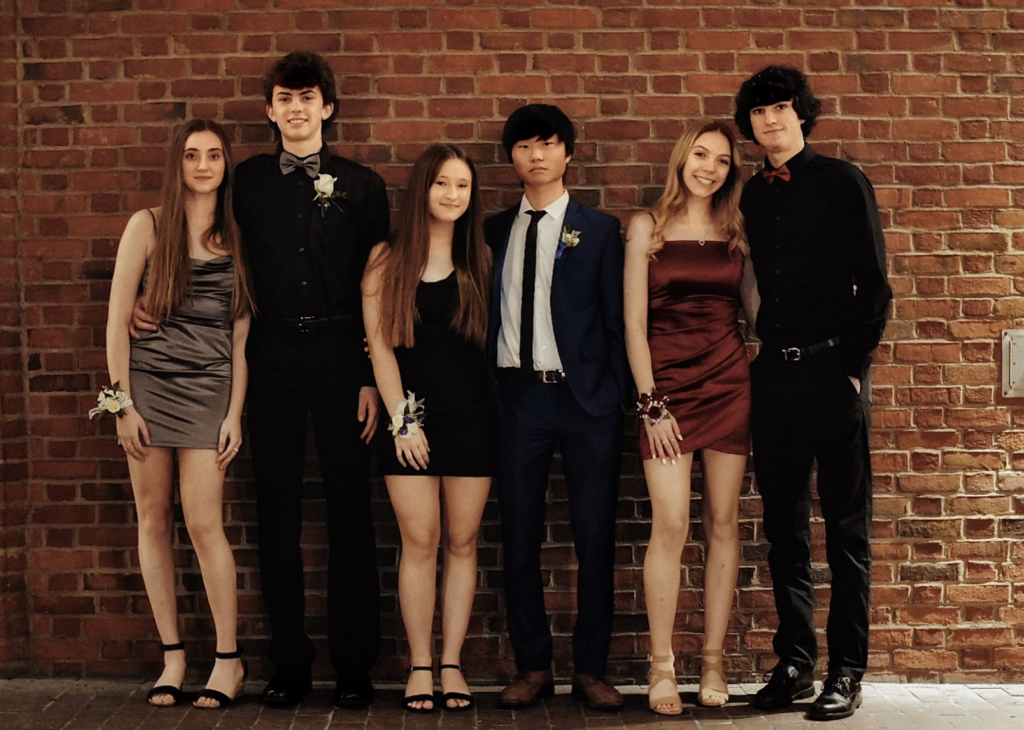Baby photography is one of the most rewarding and, at the same time, most challenging genres of portraiture. It's not easy to get those perfect baby shots you often see on Instagram and Pinterest – it takes a lot of time and practice. Babies are unpredictable, they grow fast, and on top of that, they aren't in a photogenic mood all the time. We will share 21 useful baby photography tips in this article to make your photo sessions with the youngest ones less stressful!

1. Get To Know Your Client
Just like in any other type of portraiture, you need to make sure that you understand your client's needs. Newborn photography can be done as a posed session or a more candid lifestyle session. It's up to your client to decide what kind of newborn photos they want. A combination of studio and lifestyle approaches is usually the best option because of the variety it implies.
As a newborn photographer, you should present all the options to your client and also show them samples of your previous work so they can choose what they like the most in terms of styling.
2. Be Fully Prepared To Photograph Newborns
Newborn sessions are rather delicate, and they shouldn't last for many hours. Be fully prepared before you start shooting. Know the right settings, test your camera and lighting, have some props handy, and think about suitable backgrounds. It's best to use a checklist so that you don't forget anything important.

3. Cooperate With Your Client
Your client also needs to be fully prepared for the session. The baby has to be fed and well-rested, and it's great if the client can bring some interesting props and toys that their baby likes. You should mention all these things to your client a few days before the shoot so that they have enough time to arrive at your studio prepared.
A mom might be stressed out if the baby isn't very cooperative, so it's usually the best option if both parents show up and support each other.
4. Don't Stick To Wide Aperture All The Time
Baby photographers like to work with wide-open apertures such as f/1.4 because of the soft effect and silky bokeh. However, don't stick to the widest aperture during the entire session. Introduce some shots where both the baby and the props are in focus. Also, by closing down the aperture a bit, you will get that extra depth of field that is often needed if you don't want to have issues with focusing.
If you're used to shooting at f/1.8 all the time, try out f/4 and see how it affects the photo.

5. Props That A Newborn Baby Will Enjoy
Always have a variety of cute soft props such as wraps, blankets, and headbands. They work wonders for newborn photography, and they come in many different colors, so you can successfully combine them with your backdrops. If your client has some special prop with an emotional value for the baby (personalized knitted blanket, for instance), even better!
For a bit older babies, something like a cute chair can also work as a prop.
6. Consider Photographing Siblings Too
Older siblings will make your newborn photos more dynamic, cute, goofy, and humorous. Just make sure to give clear directions to your client and their older kids to avoid unnecessary messiness. It's a good idea to capture sibling shots first and, after that, focus on traditional newborn photography. Kids usually have a short attention span and might be very impatient so photographing them at the very beginning of the session can solve many potential problems.
Photographing siblings is also a great occasion for experimentation with complementary or analogous colors. The outfits of siblings can either match or be totally different – both options can look great!

7. Be Flexible, And Don't Be A Perfectionist
Babies are tricky in the sense that you can't tell them what to do, and on top of that, sometimes it's simply impossible to change their mood. Don't be upset if your photo session hasn't turned out exactly how you wanted it to be. You may need to shoot more candid shots if the baby doesn't want to look into the camera, or perhaps some props simply don't work.
If the baby starts crying, capture images of the mother comforting the baby. Simply try to do what you can at any given moment, and you will certainly end up with some interesting shots you haven't even thought of. Bear in mind that even images of a baby crying can turn out to be really good because of their emotional value.
8. Right Angles Are Extremely Important
Don't always shoot at eye level! Experiment with getting down low, photograph the baby from above, or capture some unusual close-ups. Babies usually have many bumps, marks, and uneven skin tone, so it can take some time to find the most flattering angle.
The best session is the one that consists of many different angles and also different facial expressions of the baby.

9. Do Your Best To Capture Smiling Moments
Typically, newborns don't spend a lot of time smiling. This means that capturing a baby's smile is such a valuable moment – you need to photograph it promptly! Every parent knows when their baby is most likely to smile so talk with your client to learn about any particular good mood triggers that work for their baby.
If you have an assistant, they can help you make a baby smile or laugh.
10. Improve Your Editing Skills
As we have already mentioned, babies usually have an uneven skin tone, and they are actually a great subject for practicing skin editing. You will need to remove any unnecessary redness as well as dry milk around their mouth. The healing brush and clone stamp tool should be your best friend!
However, don't edit these photos as if they were fashion editorial shots. Small imperfections are cute and more than welcome! You can also watch a few tutorials on editing baby photography (on Udemy or even free ones on YouTube) if you want to learn some cool tricks.

11. Experiment With Black And White Newborn Photography
The majority of baby shots you see online are in color, but it can be such a great idea to experiment with the monochrome approach and see where it will lead you. Black and white photography is also great for dealing with skin blotchiness, so it can simplify your editing routine. Of course, it also gives that special timeless look!
Make sure that your client likes the idea of b&w baby photography since it's more on the unusual side.
12. Use Soft Or Indirect Lighting
This is up to your personal preference, and you can use studio lights in all your photos, but natural window light is a simple and inexpensive light source that, in most cases, looks simply fabulous. It's good to give it a try, at least.
In any case, always use indirect flash when photographing newborns because their eyes are super sensitive, and they might be scared by strobes or hot-shoe flashes.

13. Photograph The Growth Of A Newborn Baby
Babies grow so fast, and you need to photograph them quite often to capture all the phases of their growth!
You can use the same props in different sessions to show how much a baby has grown over time. This is a great way to make a creative collection of adorable baby photos. You can also keep the backdrop consistent.
Including siblings in such photos can be pretty fun too!
14. Mind The Details
Don't focus solely on the baby's face or the entire body. Try to focus on cute details such as their tiny nails or their soft little feet. If the baby is wearing an interesting outfit, you can capture babies hands and some details of the outfit.
Other details you can capture are a lock of hair, a nose, or little hands holding a toy.

15. Try Out Simple Backdrops For Your Baby Photography
It is clever to eliminate background clutter by placing the baby in front of a plain backdrop. It can be a DIY backdrop or a regular professional backdrop – both will work just fine! What matters is to try out different colors – start with neutrals but also experiment with more vibrant colors; they can look pretty playful.
If you want to invest more in backdrops, try those with interesting textures. Even a large wooden surface can act as a pretty backdrop.
16. Baby Must Be Clean And Dry
You might have some elaborate plans and ideas for your baby photography but if you want a cooperative model, first make sure the baby is well-rested, well-fed, and comfortable. This means that a diaper must be clean, and clothes shouldn't be too tight or too warm.
If you notice that the baby looks uncomfortable, talk with the mom and see if she can change the diaper or the clothes.

17. Try Shooting Outdoors
We have already mentioned that a flattering way to brighten up your baby photography is to use natural light, such as window light. You can take this a step further and photograph the baby outdoors. Of course, you have to discuss this with the baby's parents since newborns can be a bit frail, and it might be safer to photograph them indoors.
18. Use The Right Lenses
Lenses with fixed focal lengths are great for any type of portraiture, including a newborn session. Make sure you have a 50mm or an 85mm prime lens. However, don't rely only on prime lenses because a zoom lens allows you to be more flexible and frame the scene effortlessly as the baby moves around.
Of course, don't shoot the entire session with the same lens – you will miss the opportunity to introduce some variety.

19. Don't Forget To Use The Continuous Shooting Mode
This shooting mode is very useful if you have a baby on the move. It will simply increase your chances of capturing a perfect moment, something that the baby's parents will instantly fall in love with!
20. Play With Various Filters For Stylish Effects
You can do it in editing or directly while shooting, it is up to your skills and preferences. Baby photography looks great with soft and warm tones, so that's something you can easily enhance with filters. A nude color scheme can also be a great choice for a modern newborn session because it looks clean and bright.

21. Hire An Assistant
This is a very important tip! Shooting a baby all by yourself can be very challenging. Babies move around a lot; they can easily mess up props or throw tantrums. The baby's parents will certainly help you out, but having a reliable assistant will save you time and nerves.
We hope you will apply these tips the next time you're doing a baby photoshoot. Just keep practicing, and your sessions will improve dramatically over time, and this type of portraiture will become much easier and much more pleasant!






